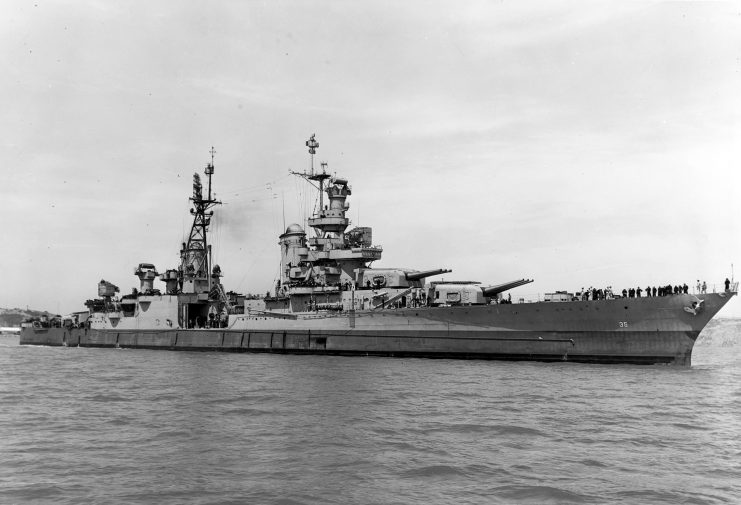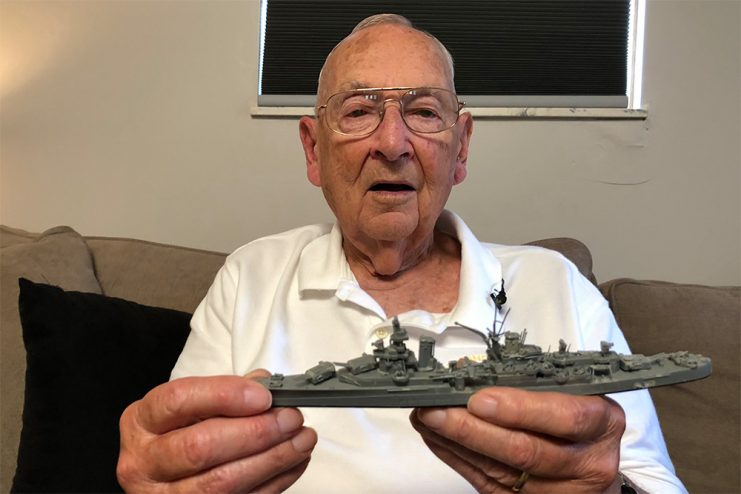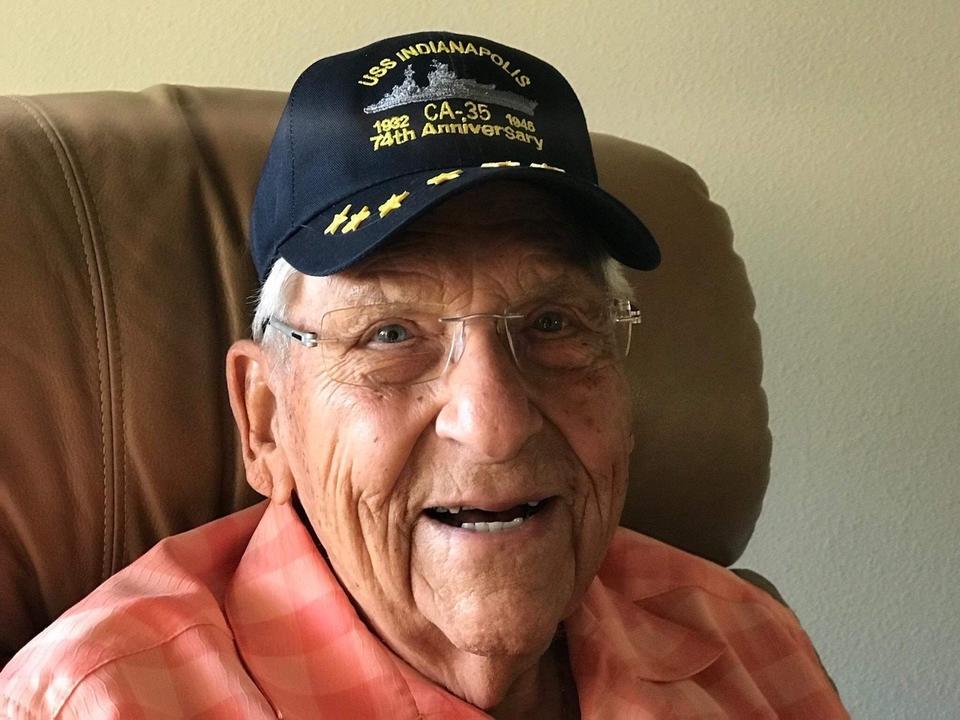Jim Jarvis, the oldest survivor of the sinking of the USS Indianapolis, died on 6th June 2020 in Uniontown, Ohio.
Jim was a well-known character and attended the reunions of the survivors of the Indianapolis.
His sense of humor could be seen at these reunions when he appeared wearing shorts with a shark-skin pattern printed on them and a t-shirt sporting the slogan “USS Indianapolis Swim Team”.

The sinking of this heavy cruiser and the subsequent battle to stay alive until rescued, shaped the man that Jarvis became.
The USS Indianapolis was massive and heavily armed. She was a heavy cruiser of the Portland Class and served in the Pacific theatre during World War II.
In July 1945, she was tasked with a secret mission. The mission was to deliver cargo to Tinian Island in the South Pacific.
No one on board had any clue that the cargo they carried and delivered contained the components and uranium required to assemble the world’s first atomic bomb, codenamed ‘Little Boy.”
The atomic bomb “Little Boy” was dropped by a B-29 Superfortress bomber named Enola Gay and captained by Colonel Paul W Tibbets Jnr., on the 6th August 1945.
It exploded over the city of Hiroshima at an altitude of approximately 1,968 feet above ground level, causing widespread casualties and destroying everything in it’s wake.
A second bomb, “Fat Boy,” was dropped over Nagasaki, and these two bombs contributed to bringing about the surrender of Japan and bringing World War II to an end.
After delivering their cargo to Tinian Island, the USS Indianapolis set off through the Philippine Sea to join her battlefleet for an assault on the islands of Japan.
Three days into her voyage, she was spotted by a Japanese submarine. The submarine fired six torpedoes at the Indianapolis and, of the six, two hit their mark. Twelve minutes later, the USS Indianapolis slid beneath the waves.

As there was such a short time between the torpedoes hitting the ship and her sinking, 300 men never made it into the sea, and they went down with the ship.
This short interval also meant that there was no time to launch the lifeboats or gather survival supplies such as food and water.
This left 890 men clinging to what-ever wreckage they could find from the ship or treading water. More seriously, the radio operators did not have a chance to send an SOS before the Indianapolis slid under the water.
This left these men floating in shark-infested waters, under the blazing tropical sun with no shelter or provisions for the next 4-5 days.
In those horrific days, over 550 men died from dehydration, exhaustion, or were taken by the ever-circling sharks. When rescue arrived, there were only 316 men left clinging to the flotsam. Of those 316 men, only nine remain alive today.
Now You Can Spend a Night Inside Some Serious History
After the war, Jim Jarvis married, and he and his wife were blessed with a daughter.
